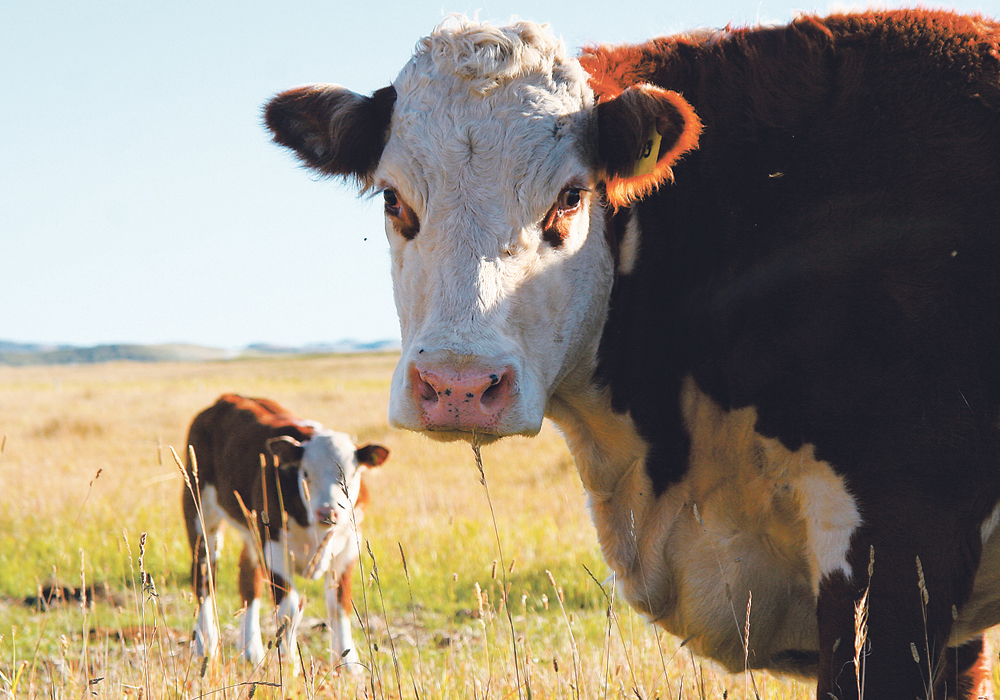Changes would mean higher fee costs, but it would help ensure the United States doesn’t implement countervail duties
The Alberta government plans to re-jig the grazing lease framework for producers, a move that would mostly see higher rates but potentially quash future trade disputes with the United States.
With much support from the beef industry, the new framework for disposition holders would see producers begin paying a rate that will largely be based on the market price of cattle starting next year.
Producers have been paying a flat rate that hasn’t changed since 1994. The changes, which were tabled in Bill 16 last week, need to be passed in the legislature before being implemented.
Read Also

Lending policy still focused on primary producers: Farm Credit Canada
Farm Credit Canada said it has not changed its business practices and remains committed to supporting all producers, after a report from an Ottawa-based media outlet claimed otherwise.
“This bill will ensure ranchers protect the environment and support the economy for generations to come,” Environment and Parks Minister Jason Nixon said after tabling the bill.
The new rate would ensure government receives a stable amount of revenue, but it will fluctuate based on market prices.
The amount producers pay will depend on their animal unit months (AUM), a figure that represents the amount of feed a 1,000 pound cow with a calf would eat in a month.
For example, the average producer operates with 231 AUMs, according to officials. If the formula were implemented this year, they would be paying about $500 more for their lease.
In 2016, when cattle prices were high, officials said the government would have collected $13.2 million rather than $2.9 million.
“It’s important that we work with ranchers to modernize our legislation so that the ranching industry can continue to grow and thrive for generations,” Nixon said.
Alberta Beef Producers, along with the Western Stock Growers’ Association and the Alberta Grazing Leaseholders Association, welcomed the changes.
Tom Lynch-Staunton, government relations and policy manager with ABP, said the organization is pleased the changes will be made.
“Yes we will tend to pay a little bit more, but we feel that is more fair and in line with other industries,” he said.
“It’s also more fair for Albertans and the province to get compensation from grazing leases.”
ABP chair Kelly Fraser said the changes show the government and the organization have collaborated well.
“There has been a lot of people working on this for a great many years, and it’s finally great to see it come to a finish,” she said.
“Our industry truly needed to have this modernized.”
Producer groups have been encouraging the government to implement the new framework because of fears the United States could impose countervail duties.
In 1999, a U.S. Department of Commerce countervailing duty investigation identified grazing rental rates as a significant contributor to the subsidization of Canada’s cattle industry.
“Countervail was a major concern in the early 2000s, and now with the current government in the United States, it’s one of those things you’re never too sure what’s going to happen,” said Kyle Forbes, chair of the Alberta Grazing Leaseholders Association.
“The less of a target we can make ourselves, it is ultimately better for our industry.”
Forbes said higher fees will be marginal, adding the price formula ensures producers aren’t hit hard if prices increase.
The province will be phasing in the framework over the next five years so that producers don’t see potential spikes in fees.
Twenty percent of the market price cost will be applied in 2020, which will change to 40 percent in 2021 and so forth until the full market price cost is applied in 2024.
As an example, producers in southern Alberta could be paying $2.73 per AUM in 2020.
In northern Alberta, producers could be paying $1.63 per AUM in 2020.
“The rates won’t go up drastically, and it won’t cripple the industry,” Nixon said.
The fees are lower in northern Alberta because inputs are higher, he added.
However, no matter the price of cattle, the province will collect at least $2.5 million for general revenue.
Of any collected revenue above the $2.5 million, 70 percent will go into general revenue and 30 percent will go into a an initiative that supports rangeland sustainability, which Nixon said could be used for research, conservation efforts or water issues. He pointed to the United Conservative Party’s commitment of funding $1 million to the Alberta Riparian Habitat Protection Society’s Cows and Fish Program as an example of where the money could go.
“Ranchers play an important role in Alberta. They support our economy and are responsible for protecting some of the province’s important grasslands and wetlands,” Nixon said.
Along with the framework changes, the province also wants to change assignment fees.
The province is proposing a flat fee of $3,150. Producers had previously been charged per AUM, which in some cases could result in assignment fees as high as $23,500.
Producer groups have pushed to include goats in grazing leases, but the province says it has no plans to move in that direction for now.
















